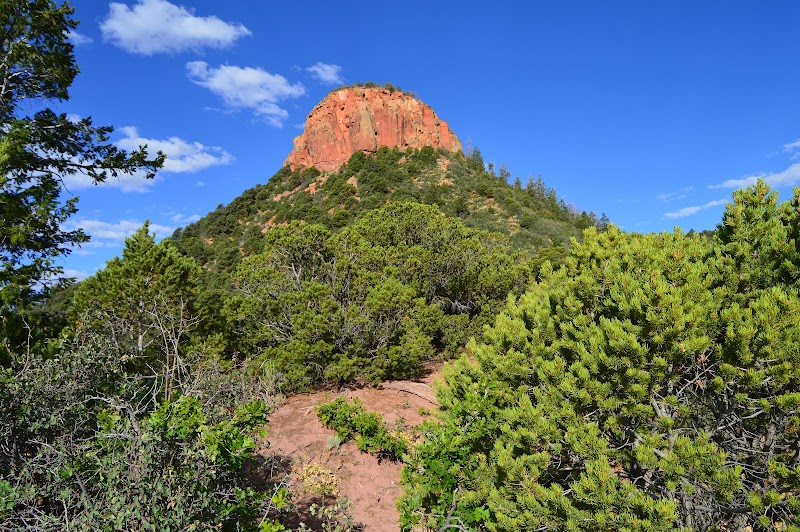
Discover the hidden world of ancient cliff dwellings and petroglyphs within Bears Ears National Monument. This rugged terrain in Blanding, Utah, offers a mix of rich history and engaging hikes perfect for adventurous travelers ready to step into a living story carved by nature and time.
Hydrate Thoroughly
Carry at least 3 liters of water per person; the dry desert air and moderate elevation gain demand consistent hydration.
Wear Appropriate Footwear
Sturdy hiking boots with good ankle support and traction are necessary for rocky, uneven trails and cliffside paths.
Start Early
Begin your hike in the morning to avoid afternoon heat and catch the best natural light for viewing petroglyphs and cliff dwellings.
Respect the Sites
Do not touch rock art or enter cliff dwellings; these areas are archaeologically sensitive and protected by law.
Exploring Ancient Cliff Dwellings and Petroglyphs in Bears Ears National Monument, Utah
Bears Ears National Monument, located near Blanding, Utah, invites adventurers to walk among stories etched in stone and carved into cliffs. Here, ancient cliff dwellings cling to sandstone walls, while petroglyphs silently recount the lives of the Ancestral Puebloans. Exploring this landscape is not just a hike, but a direct encounter with history shaped by wind, water, and time.
The main trail to some of the most impressive sites usually starts within Cedar Mesa, a rugged area of Bears Ears. Hikers face about 6 to 9 miles round trip, depending on the selected route, with elevation changes typically around 700 feet. The terrain commands respect—rocky paths that sometimes narrow, with steep drops to the canyon floor below, challenge hikers to stay focused and steady.
As you move through the juniper and piñon pine forests, the landscape opens to overlook vast canyons carved by ancient rivers that now dare you to imagine their once powerful currents. The air is dry but charged with quiet anticipation, prompting a steady pace and careful footing.
Petroglyph panels appear alongside the path, their intricate figures alert and alive despite their age. The cliff dwellings emerge gradually, their stone facades blending perfectly with the natural rock, demanding attention to detail and respect for preservation rules—touch nothing and stay on marked trails.
For those planning a visit, timing is crucial. Early spring and fall soften the harsh desert heat, while mornings bring calm light to illuminate rock art. Carry a minimum of 3 liters of water, wear sturdy hiking boots with good traction, and pack sun protection. Weather can shift quickly; always check forecasts and prepare for sudden wind or temperature swings.
After the hike, Blanding offers friendly lodging and amenities for recovery and planning your next day exploring other parts of Bears Ears. Each step through this monument is a direct conversation with a landscape fiercely itself—wild, historic, and unforgettable.
Nearby Trips
All Adventures
Boat Charters
Water Activities
Adventures near Blanding, Utah
Discover the unique and memorable adventures that make Blanding, Utah special.
Frequently Asked Questions
Are permits required to hike in Bears Ears National Monument?
Certain areas within Bears Ears require permits, especially for overnight camping and some trailheads. It's best to check the latest US Forest Service or Bureau of Land Management regulations before your trip.
How close can I get to the cliff dwellings and petroglyphs?
Visitors are encouraged to view these sites from designated paths and observation points. Climbing on or touching these ancient structures is prohibited to protect their integrity.
What wildlife might I encounter during the hike?
Keep an eye out for mule deer, black-tailed jackrabbits, various lizards, and occasionally golden eagles soaring above the canyon walls.
Is the hike suitable for children or beginners?
While the trail is moderate, some uneven and exposed sections may be challenging for young children or inexperienced hikers. Careful supervision and preparation are advised.
Are there restroom facilities at the trailheads?
Basic pit toilets are available at some of the main trailheads, but facilities are limited. Plan accordingly.
What should I do if I encounter bad weather on the trail?
Seek lower ground and shelter away from cliff edges; lightning and high winds can be hazardous. Turn back if conditions deteriorate rapidly.
Recommended Gear
Sturdy Hiking Boots
Essential for navigating rocky and uneven terrain safely with ankle support and grip.
Sun Protection (Hat, Sunglasses, Sunscreen)
Desert sun can be intense, even outside of summer; protect your skin and eyes.
Water Reservoir or Bottles
Necessary to stay hydrated throughout the hike; desert air dehydrates faster than expected.
Layered Clothing
Temperatures shift quickly; layers keep you comfortable from cool mornings to warmer afternoons.
Local Insights
Hidden Gems
- "Moon House Ruins — a less visited but remarkable cliff dwelling with well-preserved masonry."
- "Cedar Mesa Overlook — offers spectacular views over the canyons with opportunities to spot condors."
- "Hidden petroglyph alcoves found along secondary paths less trafficked by visitors."
- "Seasonal wildflower patches that bloom after spring rains in sheltered canyon areas."
Wildlife
- "Desert bighorn sheep occasionally appear on rugged cliff faces."
- "Vibrant western tanagers and other migratory birds during spring and fall."
- "Nocturnal mammals like ringtail cats and spotted bats active after sunset."
History
"Bears Ears preserves one of the richest archaeological landscapes in North America, home to Ancestral Puebloans who built cliff dwellings, crafted intricate pottery, and left rock art that continues to educate and inspire."
